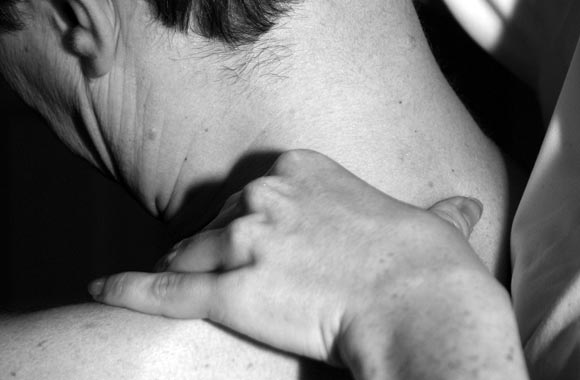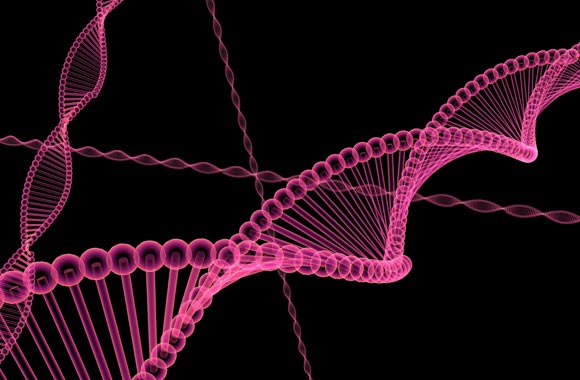Everything you need to know about movement disorders.

Movement Disorders
“Movement disorders are disorders due to neurological pathology affecting the fine muscular movements of the body and interfere with their quality and quantity”.
The basal nuclei control our muscular movements by influencing the cerebral cortex. It assists in the regulation of voluntary movements and the learning of motor skills. Basal nuclei influence the skilled cortical motor activities e.g. motor activities we use in writing the letters of the alphabet, drawing a diagram, passing a football, even using the vocal cords in talking and singing, and using the eyes muscles when looking at an object. The basal nuclei not only influence the execution of a particular movement but also prepare for the movements.
Thus, any disorder in the basal nuclei leads to movement disorders. These are of two types, namely:
Hyperkinetic Disorders: These disorders are those in which there are excessive and abnormal movements such as seen with chorea, athetosis, and ballism.
Hypokinetic Disorders: These include those in which there is a lack or slowness of movement. Parkinson’s disease includes both types of motor disturbances.
Forms
Movement disorders are seen in many forms. Some of them include:
Chorea: In this condition, the patient exhibits involuntary, quick, jerky, irregular, movements that are nonrepetitive. Swift grimaces and sudden movements of the head or limbs are some good examples of this condition.
Sydenham Chorea: It is a disease occurring in childhood in which there are rapid, irregular, involuntary movements of the legs, arms, face, and trunk. This disease is usually associated with rheumatic fever. The antigens of the streptococcal bacteria are similar in structure to the proteins present in the membranes of the striatal neurons. Antibodies present in the host bind them and also attack the membrane of the neurons of the basal ganglia. This leads to the production of choreiform movements which are fortunately transient and there is full recovery as well.
Hemiballismus: It is the form of involuntary movement confined to one side of the body. This movement usually occurs in the proximal extremity muscles and the limb suddenly flies about out of control in all directions. The lesion occurs in the opposite subthalamic nucleus or its connections which is usually a small stroke; it is in the subthalamic nucleus where smooth movements of different parts of the body are integrated.
Athetosis: It consists of slow, sinuous, writhing movements that most commonly involve the distal segments of the limbs. There is degeneration of the globus pallidus which occurs with a breakdown of the circuitry involving the basal nuclei and the cerebral cortex.
Dystonia: In dystonia, there are involuntary muscle spasms occur due to neurological muscle disorder. These movements can affect limbs, the vocal cord, eyelids, etc.
Huntington’s Disease: In this disease, choreiform types of movements occur which are of a flickering type.
Parkinson’s Disease: Here tremors at rest, rigidity, and bradykinesia occur.
Tourette Syndrome: In this disease, there are involuntary movements of the vocal cord occur.
Akathisia: In this condition, there is motor restlessness,
Tardive Dyskinesia: This condition involves involuntary movements of the tongue, lips, neck, trunk, and limbs.
There are likewise lots of other diseases which cause abnormal movements of the parts of the body.
Treatment*
This includes treatment of the specific disease which has led to involuntary movements.

Dystonia
Dystonia is one of the movement disorders and neurological problems in which a person suffers from continuous muscle contraction that leads to repetitive movement and resultant twisted posture. Due to repetitive muscle contracture, the posture of a person becomes abnormal. The person has no control over stopping these muscle contractions. So superimposed movements are seen in those patients that may be myoclonic, athetosis, or tremors. These are mostly seen during work and they become better at rest.
Causes
The causes of dystonia are divided into primary causes and secondary causes. Although the exact reason for this disease is still not known. The primary cause is mostly seen to affect adults while the secondary cause is seen in the case of children suffering from this disease.
Primary cause
Primarily disease arises due to central nervous system dysfunction and the pathology damaging the motor functions. It is thought that genetics also play a role in causing this disease.
Secondary cause
Dystonia is believed to be caused by a disease of the brain and the central nervous system.
These may be idiopathic as well as traumatic. Drug-induced dystonia is also seen in many people.
Trauma such as head injuries, electrical injuries, or any peripheral all leads to this condition development.
Stroke and Wilson disease lead to the development of such conditions so they may be caused by certain diseases.
Lack of oxygen supply to the brain also leads to the development of dystonia
Infection by various bacteria within the brain leads to this disease
Abnormal metabolism disorders are also associated with causing this twisted posture disease.
Poisoning from any poison such as metal poison may also lead to this movement disorder.
Types
There are many types in which dystonia is presented in a person. These include:
- Focal: it includes writer’s cramp, oromandibular dystonia, blepharospasm, spasmodic dystonia, cervical dystonia, etc.
- Generalized: In this type, more than one segment of the body is affected by this condition. Mostly occurs in childhood first affecting the legs and then moving upward and involving other organs.
- Segmental: Here only one segment of the part of the body is suffering from dystonia.
- Multifocal: Here more than two or two parts of the body are involved which are not related to each other.
- Hemidystonia: Here only one side of the body is suffering from the dystonic condition.
- Intermediate dystonia
- Acute dystonic reaction
- Sexual dystonia.
Signs and symptoms
The signs and symptoms of dystonia include difficulty in writing, cramps in muscles, due to running or walking one foot seemed to pull up, neck involuntary movements and its twisting, uncontrolled rapid eye blinking, speech problems, tremors, smacking of lips, and pain in the hands or muscles on little exertion. Likewise, there are seen widespread movement problems in such patients. These symptoms are first of slow intensity but they gradually progress and make the condition of the patient worse.
Diagnosis
It is made after taking a complete history and a person’s presentation of abnormal and twisted posture. Certain tests are also done to find out the cause of the disease.
Treatment*
The use of certain medicines may improve the condition and slow down abnormal muscle contractions. These include the use of muscle relaxants, cholinergic antagonists, and dopamine agonists.
Physiotherapy may help a person to acquire a better position and function of the body and its part for performing daily activities of life.

Huntington’s Disease
Huntington’s disease is an autosomal dominant inherited disease with its onset occurring most often in adult life i.e. its symptoms begin at age 30 to 40 years. Death usually occurs after 15 to 20 years after the onset of this disease.
Etiology
The cause of this disease has been traced to a single gene defect on chromosome 4. This gene contains protein huntingtin, the function of this protein is still unknown, and how this protein causes the disease is also unknown. The codon CAG that encodes glutamine is repeated more times than normal. Huntington’s disease affects men and women with equal frequency and unfortunately reveals itself only after they have had their children.
Signs and Symptoms
Patients with this disease show the following signs and symptoms.
Choreiform Movements: These are flicking and involuntary movements in individual muscles of extremities as well as there is twitching of the face and facial grimacing is present. In the late case, more muscle groups get involved, which makes the patient immobile and unable to speak or swallow.
Reason: These abnormal movements in this disease are believed to be caused by the loss of cell bodies of the gamma-aminobutyric acid (GABA) secreting neurons present in the caudate nucleus and putamen along with acetylcholine-secreting neurons in many parts of the brain. The terminals of the axons of the GABA neurons are normally portions of the globus pallidus and substania nigra. As a result of this loss of inhibition, the spontaneous outburst of globus pallidus and substania nigra activity occurs and this results in distortion movements.
Progressive Dementia: This occurs with the loss of memory and intellectual capacity of an individual with this disease. This dementia does not result from the loss of GABA neurons but the loss of acetylcholine-secreting neurons, especially in the thinking areas of the cerebral cortex. In children, this disease show rapid progression, chorea, and rigidity are the dominant symptoms. There are complaints of anxiety and depression along with aggression and irritability with this disease.
Lab Diagnosis
It is made based on history and physical examination. On CT scan, there are enlarged lateral ventricles seen which are due to degeneration of the caudate nuclei. Nowadays genetic testing can be done on an embryo to confirm this disease. MRI and PET are also considered best in determining brain changes which can give the results before the symptoms of the disease arise.
Treatment*
Although there is no perfect medical cure for this disease with the help of certain medicines, many symptoms can be treated to some extent. For example by the use of antipsychotics or neuroleptics, tetrabenazine, and benzodiazepines relief from chorea can be achieved. Antidepressants are also found useful in these patients. They can provide them with a calm mind and remove depression and anxiety. They also enhance their good mood. These drugs result in increasing levels of serotonin and norepinephrine in the brain which are essential for normal moods. The rehabilitation has not seen so successful but it can give little improvement in this patient’s walk and speech.

Parkinson’s Disease
Parkinson’s disease is a progressive disease that commences between the ages of 45 and 55 years. It is also known as paralysis agitans and results from neuronal degradation of that area of the substantia nigra that sends dopamine-secreting nerve fibers to the caudate nucleus and the putamen. This disease affects millions of people in the world.
Etiology
The exact cause of this disease is unknown. However, the dopamine secreted in the caudate nucleus and the putamen is of the inhibitory type of transmitters, and therefore the destruction of these dopaminergic neurons in the substantia nigra of these patients theoretically allows the caudate nucleus and the putamen to become overactive and cause a continuous output to excitatory signals to the corticospinal motor system. These signals can then excite many or all of the muscles of the body and thus leading to rigidity. Also, the degeneration of the neurons of the substantia nigra that send their axon to the corpus striatum results in the reduction in the release of the neurotransmitter dopamine within the corpus striatum. This further leads to hypersensitivity of the dopamine receptors in the postsynaptic neurons in the striatum.
Signs and Symptoms
Tremors: These result from alternate contraction of agonists and antagonists. These are slow and occur most frequently when the person is at rest. They disappear during sleep. They should be distinguished from cerebellar disease which occurs when purposeful movement is attempted means intention tremors.
Rigidity: It is present equally in all opposing muscle groups. If tremors are absent, the rigidity is felt as resistance to passive movement and is referred to as plastic rigidity. In case tremors are present, the muscle resistance is overcome as a series of jerks and it is called cogwheel rigidity.
Bradykinesia: In this case, there is difficulty in initiating and performing new movements and these are slow, the face becomes expressionless and the voice becomes slurred and unmodulated. There is a loss of swinging of the arms.
Postural disturbances: The patient of this disease stands on a stoop and his arms are flexed. He walks by taking short steps and often is unable to stop. He may break into a shuffling run to maintain his balance.
Normal Muscle Power: There is no loss of muscle power and no loss of sensibility as well. Because corticospinal tracts are normal, the superficial abdominal reflexes are normal and there is no Babinski response too. The deep tendon reflexes are normal as well.
Types
Three types of this disease are present for which causes are also known. These are:
Postencephalitic Parkinsonism: It is due to viral encephalitis which damages the basal nuclei. Its outbreak occurred from 1916-1917.
Iatrogenic Parkinsonism: This is due to the side effect of neuroleptics drugs e.g. phenothiazine. Meperidine analogs and carbon monoxide poisoning, as well as manganese, can produce the symptoms of parkinsonism
Atherosclerotic Parkinsonism: This disease occurs in elderly patients who are suffering from hypertension.
Treatment*
Treatment* with L-Dopa: Administration of L-dopa to these patients usually ameliorates many of the symptoms, especially rigidity and akinesia.
Treatment* with L-deprenyl: This drug inhibits monoamine oxidase which is responsible for the uptake of dopamine and its destruction.
Treatment* With Transplant Fetal Dopamine Cells: This gives short-term success by transplanting dopamine-secreting cells into the caudate nuclei and putamen.

Restless Leg Syndrome
Definition: A neurological disorder in which a person moves his legs as a result of an irresistible impulse whenever he feels upset. This gives him a sense of relaxation. This is called restless leg syndrome. It is one of the movement disorders.
In this syndrome, a patient feels unknown sensations in his legs which are not painful but are an itchy type of uncomfortable sensations or feelings of pins and needles deep in the legs. On movement, such a patient feels at ease. This condition of the legs is mostly seemed at night or during rest. This disease can occur at any age. It is not a life-threatening condition.
Etiology
Although the exact cause of this syndrome is unknown it is found in the case of any nerve disease, diabetes mellitus, obesity, pregnancy, or venous disorders case as iron deficiency anemia, smoking, peripheral neuropathy, Parkinson’s disease, etc. This disease is thought to be genetically linked and is inherited the autosomal dominant trait.
Signs and Symptoms
Patients of this disease usually feel strange sensations in the lower legs which create an urge to move their legs. On moving the legs they feel comfortable. These sensations are felt in the legs when they are taking rest or when they lay down on the bed. These sensations are like crawling, tingling, itching, and aching and they last 2 hours or more. These movements also disturb the patient sleep. The patient remains sleepless and fatigued all day long. They can even make a patient’s sitting worse anywhere where they are sitting. Walking or stretching the muscles of the legs gives them relief. There is a complaint of motor restlessness as well.
Drugs Causing this syndrome: Various drugs result in symptoms of this disease. If patients are having this disease, they should avoid these drugs as they can worsen the disease more. These include antihistamines, antiemetics, antidepressants, or withdrawing the benzodiazepines. It has been seen that decreased blood sugar level also makes this condition worse.
Lab Diagnosis
After a complete history and physical examination, some tests are done. These include checking iron levels in the blood and completing blood tests. Doppler ultrasound is essential here. It can check the condition of the vascular system. It tells about any disorder in the venous system accurately.
Treatment*
The treatment is based on relieving the patient from the symptoms and also treating the exact cause of this disease. Dopamine agonists have been found beneficial in treating this disease. These include levodopa as a first-line drug. Other drugs include gabapentin and pregabalin for the removal of symptoms. Clonazepam is also helpful. Benzodiazepine and opioids also provide relief.
These all drugs provide symptomatic relief only. If the patient is suffering from iron deficiency anemia, he should be given folic acid or other iron supplements. The cure for this disease is not possible until now. There has been seemed that this condition becomes worse in some individuals while in others it goes away within a few months to years.

Tics
Tics are movement disorders characterized by a coordinated, repetitive movement involving one or more muscles.
Types
They are of two types depending on the pathology, namely:
- Motor Tics: The condition in which motor movements are altered.
- Vocal Tics: Tics that involve sounds are called vocal tics.
These tics can either be simple or complex. In the case of simple motor tics, there is the involvement of only one muscle group and in the case of simple vocal tics, the sound is not so distorted but means full. In the case of complex motor tics, there is the involvement of more than one muscle group and in complex vocal tics, the sound is not meaning full.
There is a possibility that these may occur in any part of the body like hands, arms, shoulder, and face. It has seemed that these tics result whenever there is a feeling of fatigue, emotion, anxiety, or excitement. Tics usually occur in children.
Transient tics disorder: There is another variety of tics called transient tics disorder which occurs for some period and then sets off.
Chronic Tic: Some tics remain there and could not go away. These are called chronic tics.
Signs and Symptoms
There may be repeated blinking of an eye, wrinkling of the nose, biting of the lip, head twitching, shoulder shrugging, kicking, etc. These are motor tics signs.
The phonic or vocal tics signs and symptoms include clearing of the throat, sniffing, hissing, barking coughing and grunting, etc
Diagnosis
It is made after taking a complete history and physical examination. Test for various other diseases is done to role out other diseases like thyroid disease. So TSH levels are checked. MRI is done to see whether any abnormality present in the brain. Other chromosomal disorders are also checked to exclude them.
Treatment*
The treatment of tics includes education of the children about them plus certain therapies which help control. These include different pieces of training e.g.
Awareness Training: In this, they aim to make the children aware of the time during which they feel it. Ask them to see and notice them. It is for their self-knowing about these tics.
Relaxation Training: This targets muscle relaxation so that child remains free of stress and does not produce vocal tics as well as motor tics.
Competing Response Training: Here children are kept buy in those activities which are against the tics or by which tics may be stopped.
Management Training: Here a physician along with the child evaluates the tic condition whether they settle or progress.
These all pieces of training allow the children to cope with their tics so that they do not feel embarrassed about them and lose confidence. By performing these pieces of training, children get confidence and better control of them.
Throughout a period family support is an essential component. They should encourage them and praise them for learning about tics and fighting with them.
Medical therapy is also done. Certain medicines are helpful like pimozide, risperidone, and haloperidol. These drugs are neuroleptics and can lessen the conditions.

Tourette’s Syndrome
Definition: “This syndrome is the inherited disorder which results in both motor tics and phonic tics which are characterized by coordinated and repetitive movements and sounds.”
Children suffer from these tics at the age of 2- 3 years. There is a tendency for the tics that they tend to disappear with age and if they continue into adulthood, their frequency is low and decreased. Tourette Syndrome is a spectrum of tics disorders including all the tics along with transient or chronic tics. The prognosis of this disease is good. A child or person can spend his normal life with this syndrome as this is not a life-threatening condition.
Sign and Symptoms
Waxing and waning type of tics are seen here. A child may present with the repetitive blinking of eyes, twitching of eyes, coughing, jerking movement of the neck, shrugging of the shoulder, unusual sound from the nose or throat, and grunting sounds. In complex types of tics a person may harm himself, he repeats his own same words many times and this condition is called palilalia. In another condition called Echolalia, a person repeats others’ words. There may seem an urge to do these tics as well. These tics are non-rhythmic and temporary. They increase as a result of certain stimuli like emotional, physical, or mental such as anxiety, excitement, or fear.
Etiological Factors
Although the exact cause is unknown, it is seen that the children born to mothers who smoked during their pregnancy or took alcohol or undergone any stress, or experienced extreme nausea and vomiting during the first three months of the pregnancy suffer from this syndrome. It may also arise when during intrauterine life, a fetus does not get enough blood and oxygen supply. This disease may be seen in low-birth babies as well. So this disease is a mixture of both genetic and environmental factors. This disease can be transmitted by an affected parent to his child since it is genetically linked.
Diagnosis
It is done based on a complete history, family history, and physical examination. Certain tests are done to rule out other similar kinds of disorders. These include autism, simple tics, hypothyroidism, or other brain disorders along with certain movement disorders. MRI or CT scan is done in this case to rule out brain changes or pathology.
Treatment*
It consists of not only pharmacological intervention but psychobehavioral therapy is also necessary for this syndrome. In the case of a child, education is necessary to make him realize these tics. These are called habit reverse training. For both adults and children, certain therapies have been proven beneficial.
They create awareness in them and educate them on how to cope with this problem without getting embarrassed. In case a person is depressed or in any other state of mental illness like anxiety, etc, and feels these tics, his depression has to be removed by giving antidepressants e.g.; fluoxetine, fluvoxamine, or sertraline. These are serotonin reuptake inhibitors. Some neuroleptics have been found beneficial in patients with this syndrome such as pimozide, haloperidol or risperidone are effective drugs for this Tourette’s syndrome.